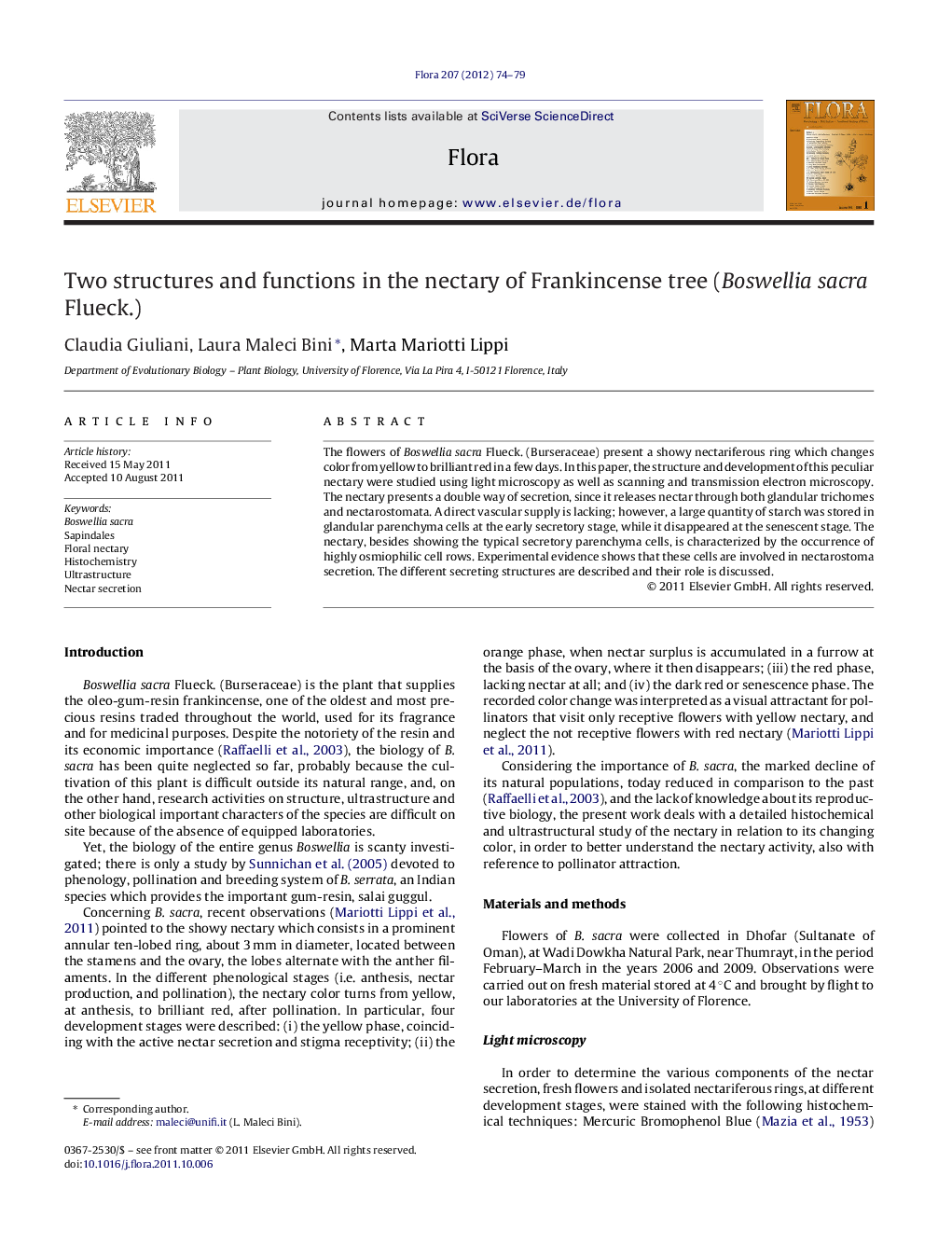| Article ID | Journal | Published Year | Pages | File Type |
|---|---|---|---|---|
| 2179779 | Flora - Morphology, Distribution, Functional Ecology of Plants | 2012 | 6 Pages |
The flowers of Boswellia sacra Flueck. (Burseraceae) present a showy nectariferous ring which changes color from yellow to brilliant red in a few days. In this paper, the structure and development of this peculiar nectary were studied using light microscopy as well as scanning and transmission electron microscopy. The nectary presents a double way of secretion, since it releases nectar through both glandular trichomes and nectarostomata. A direct vascular supply is lacking; however, a large quantity of starch was stored in glandular parenchyma cells at the early secretory stage, while it disappeared at the senescent stage. The nectary, besides showing the typical secretory parenchyma cells, is characterized by the occurrence of highly osmiophilic cell rows. Experimental evidence shows that these cells are involved in nectarostoma secretion. The different secreting structures are described and their role is discussed.
